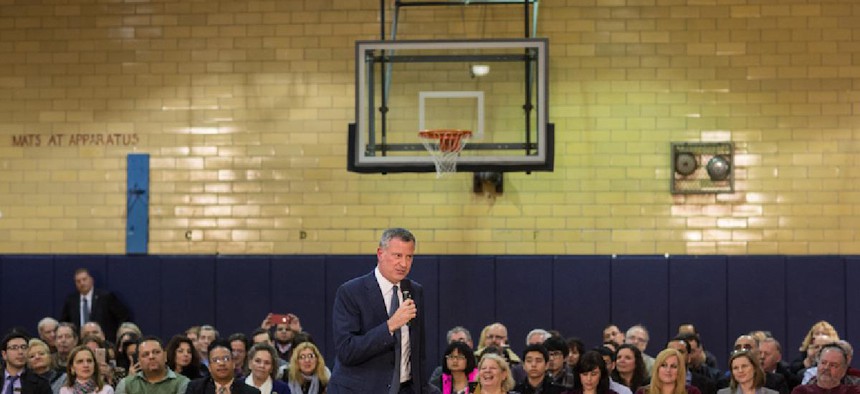With Mayor Bill de Blasio’s Mandatory Inclusionary Housing proposal under consideration by the New York City Council, we are in the midst of a robust debate over affordable housing. It’s an exciting time to be an organization that works to house the very poorest New Yorkers, like we do at Settlement Housing Fund. It’s also a very challenging one, and solutions to the city's housing crisis won't come easy, or cheap.
We support the mayor's Mandatory Inclusionary Zoning proposal as one of many tools that New York City needs to create affordable housing, but it’s a mistake to think about the proposal as the only tool, or as a cure-all for the diversity of housing needs in our city. Much of the debate around Mandatory Inclusionary has centered on one question – who should it help? The proposal before the Council would require all developers in up-zoned or rezoned areas to create 25 to 30 percent of units for families earning around $46,000 to $62,000 annually. But the chief criticism of the plan is that it does not serve lower-income families.
As a “houser” of many of those lowest-income families, there’s no question in my mind that these families need the city’s help. A renter earning below 30 percent of the Area Median Income, or $25,900, is likely paying more than half of their income on rent, and the vacancy rate on units that low-income New Yorkers can afford is under 1 percent. New York City real estate is expensive for moderate income households, but it's much harder if you're poor.
Creating affordable housing for families making as little as $18,000 or $25,000 year is an expensive and difficult proposition. Take, for example, this simple affordable housing industry standard – it costs around $8,000 per year to operate a unit of housing. This excludes the astronomical cost of acquiring land and constructing a building. Compare that to what a single parent working full-time for $12 an hour can afford to pay in annual rent – $7,500 – and you see the dilemma.
The market alone – in this case, Mandatory Inclusionary Housing – cannot create affordable housing for the poorest New Yorkers in most of the city’s neighborhoods. The policy works by harnessing the strength of a strong real estate market, i.e. the ability to charge high rents, and using that rental income to offset the lower rents that low-income households pay. In the low-income neighborhoods that Settlement Housing Fund works in, I have never seen a new construction project that could absorb rents affordable to extremely low-income households without additional subsidies. Direct city subsidy, low cost loans and federal Low Income Housing Tax Credits have been, and remain, the critical ingredients to get this housing built. Settlement Housing Fund has developed 8,700 apartments over the past 40 years and those buildings and apartments are still operating and helping people today, decades later.
Mandatory Inclusionary Housing is just one piece of a multi-pronged plan to build affordable housing in New York City. By creating moderate-income housing, scarce city resources can be directed toward housing the very poor. These units have the added benefit of remaining affordable for the long term, and cannot be impacted by the market forces that have resulted in so many affordable units coming off line.
I share the goal of maximizing affordable housing at the lowest rungs of the economic ladder. These are the families hit hardest by this housing crisis, and who are most at risk of homelessness. However, Mandatory Inclusionary Housing is not the tool to focus on. The numbers have to work, and we need to be realistic about what zoning alone can achieve and not let the opportunity to create affordable housing en masse pass us by.
Alexa Sewell is the president of the Settlement Housing Fund.


